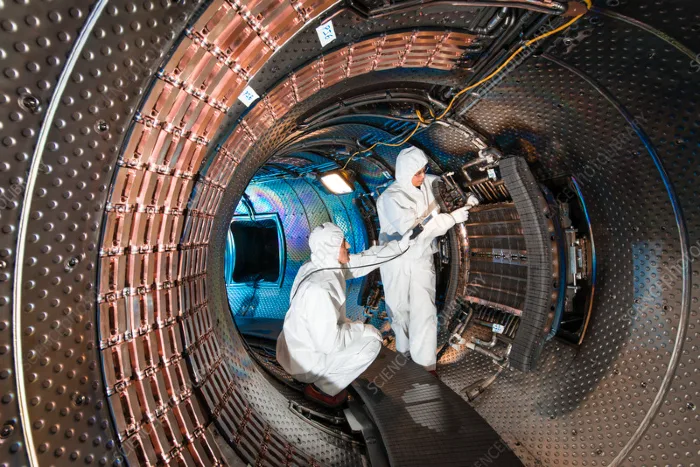The U.S. Department of Energy (DOE) recently spotlighted geothermal heat pumps (GHPs) as a key player in the journey towards a decarbonized energy future. Let’s dive into what this means and why it’s a big deal…because it is.
Understanding the DOE’s Findings
In a groundbreaking analysis, the U.S. Department of Energy (DOE) has cast a spotlight on geothermal heat pumps (GHPs) as a transformative solution for our energy needs. Let’s delve deeper into their findings and understand the full extent of this potential energy revolution.
The DOE’s research underscores that if geothermal heat pumps are deployed in high numbers, they could be pivotal in decarbonizing heating and cooling systems across the U.S. This isn’t just a minor improvement; we’re talking about a major shift in how we manage energy in buildings, leading to significant environmental and economic benefits.
Let’s talk numbers – and these are pretty impressive.
The analysis predicts that retrofitting about 70% of U.S. buildings with GHPs could decrease electricity demand by as much as 13% by the year 2050. This is compared to scenarios where decarbonization efforts proceed without incorporating GHPs.
To put this into perspective, this reduction in demand equates to averting the construction of approximately 24,500 miles of new grid transmission lines by 2050. That’s equivalent to crossing the continental United States eight times!
Alejandro Moreno, the Associate Principal Deputy Assistant Secretary for Energy Efficiency and Renewable Energy, emphasized the significance of this finding. “Geothermal heat pumps offer enormous value for the nation’s energy future,” Moreno stated. He further highlighted, “This report confirms that geothermal heat pumps are a ready-made strategy for decarbonizing our buildings while reducing the need for new electricity generation and transmission, and bringing energy savings to Americans nationwide—all while creating U.S. jobs.”

The study, conducted by experts at Oak Ridge National Laboratory and the National Renewable Energy Laboratory and funded by the DOE’s Geothermal Technologies Office (GTO), went beyond just identifying the benefits of GHPs.
It also explored how combining mass GHP deployment with building envelope improvements can create significant value for the electricity grid. This combination could lead to a reduced need for generation capacity, storage, and transmission compared to other decarbonization pathways.
What’s more, the DOE’s analysis highlights that large-scale GHP deployment has the potential to eliminate more than seven gigatons of carbon emissions, even in the absence of any specific decarbonization policy. This is a substantial figure, considering the urgent need to address climate change.
GHPs aren’t just for individual homes or businesses; their versatility allows them to be implemented in networks of buildings, such as college campuses, and in various climates and locations. Whether it’s urban or rural environments, new construction, or retrofitting existing buildings, GHPs show remarkable adaptability.
The DOE’s analysis proves geothermal heat pumps are a key to unlocking a decarbonized energy future. With their ability to reduce electricity demand, cut down carbon emissions, and limit the need for additional grid infrastructure, GHPs stand out as not only a sustainable choice but also an economically advantageous one. This analysis reaffirms the role of GHPs in our journey towards a more sustainable, efficient, and environmentally-friendly energy landscape.
And while that’s all very impressive (and it is), what exactly are geothermal heat pumps, and how do they work? Let’s get into that!
How Do Geothermal Heat Pumps Work?
Now, let’s break down what a geothermal heat pump is and how it works. Simply put, a GHP uses the constant temperature of the earth to heat and cool buildings. Unlike traditional systems that rely on outside air, GHPs exchange heat with the ground. This is possible because a few feet below the surface, the Earth maintains a nearly constant temperature, typically warmer than the air above it during winter and cooler in the summer.
GHP systems have three main components: a heat-exchange loop, a heat pump unit, and a distribution system for delivering air conditioning or heating to the building. The loop is buried in the ground and circulates a fluid (like water or a refrigerant) that absorbs or dissipates heat from the ground. This fluid then passes through the heat pump unit, where it either gives up heat to warm the building or absorbs heat to cool it.

Why Are GHPs Good for the Environment?
Geothermal heat pumps are a green, sustainable energy solution. They significantly reduce carbon emissions compared to traditional heating and cooling systems. For instance, the DOE’s study shows that large-scale GHP deployment could eliminate more than seven gigatons of carbon. This is like taking millions of cars off the road! Plus, additional efficiency measures, like building weatherization, can further increase these benefits.
GHPs and Alaska’s Carbon Offset Efforts
Interestingly, the use of geothermal heat pumps aligns with innovative approaches like the one in Alaska, where they’re using these systems to cut down on carbon emissions. It’s a great example of how local initiatives can contribute to broader environmental goals.
Benefits Beyond the Environment
Beyond environmental impact, GHPs are versatile and can be used in all climates, urban or rural areas, and in both new and existing buildings. Their implementation in networks of buildings, like college campuses, showcases their adaptability.
Plus, since most GHP equipment for the U.S. market is manufactured domestically, increasing their deployment can expand local industries and create jobs.
The Geothermal Energy Market Is Growing
The global geothermal heat pumps market size was valued at $9.4 billion in 2022 with installations in Asia-Pacific leading the way where adoption of geothermal has been strong primarily due to grants and government subsidies in the pursuit of lowering carbon emissions.
Experts believe the global value of geothermal installs will hit $23.18 billion by 2032 and will continue to grow at a compound annual growth rate (CAGR) of 9.5% from 2022 to 2032.
This is great news for us all! With each successful geothermal heat pump install, the components will, inevitably, get a bit cheaper!
More To Discover
- MIT’s Bacteria-Based Solution for Sustainable Farming May, One Day, Replace Chemical Fertilizers
- There Are Trillions of Tons of Clean Power Beneath U.S. Soil
- Breakthrough Drug Could Deliver Longer Lives for Our Big Dogs
- Wisconsin Scientists Innovate a Promising Solution to Extract Ammonia from Livestock Manure

Conclusion: A Promising Pathway
The DOE’s analysis highlights geothermal heat pumps as a promising pathway to a decarbonized energy future.
By understanding how GHPs work and their benefits, we can appreciate why this technology is gaining attention as a sustainable solution for our heating and cooling needs.
As we continue to strive for greener energy sources, GHPs stand out as a practical and effective choice for reducing our carbon footprint and contributing to a healthier planet.





















